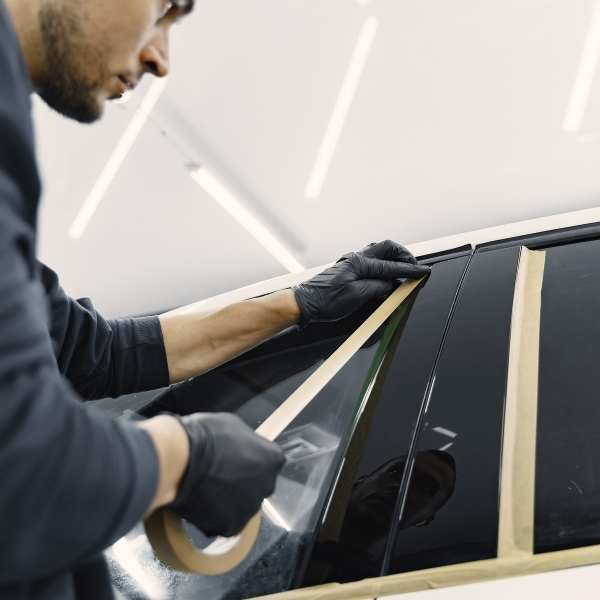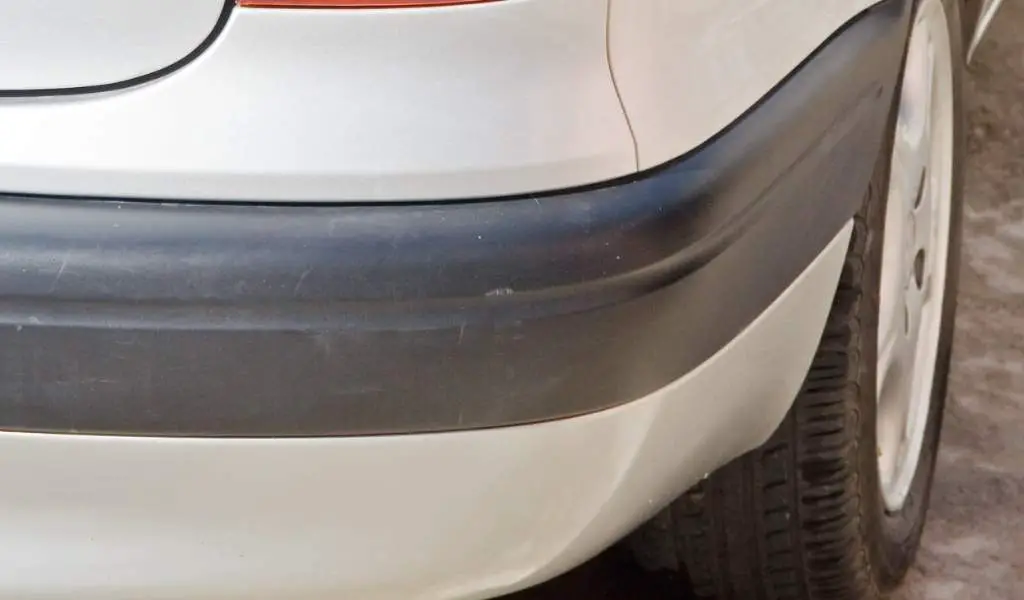Disclosure: As an affiliate I may earn a commission on any qualifying purchases, including those from Amazon, at no extra cost to you -read more
From bumpers to door handles, the black plastic trims on your car are unavoidable, especially if you have an older vehicle.
Just like your paintwork or any other part of your vehicle, over time, these trims tend to fade and can look very dull.
Luckily, you can restore your faded trims and by following the steps in this guide, they’ll be looking as good as new in no time at all.
Why Do Trims Fade?
Car manufacturers use a variety of different plastics on a vehicle, but none of them can stay looking new forever.
The trims tend to be made from a heavy-duty polymer such as acrylonitrile butadiene styrene (ABS), this is chosen because it’s very easy to mould, it’s cheap to make and very strong.
But the trims will be left exposed to the elements for many years and will eventually start to fade.
The main causes of fading are:
- Sunlight – UV rays in sun light are the biggest factor, this causes the plastic to bleach and is particularly prominent on black trims which absorb more sunlight than other colours.
- Oxidation – As oxygen mixes with heat, it causes a chemical process called oxidation which causes the colour of paint to lose its radiance.
- Road Contaminants – The corrosive elements in road contaminants such as grit salt or grime can cause the plastic to fade quicker.
- Mould – If you don’t regularly clean your vehicle, mould and mildew may appear and is prone to appearing on the trims. The mould itself won’t fade the plastic but it will degrade colourants and protective coatings that the manufacturer has applied.
The difference is even more noticeable if the trim was originally the same colour as the bodywork.
How to Permanently Restore Plastic Trim?
The best way to permanently retore the faded trims on your vehicle is using a specialist trim restorer.
You’ll need:
- Trim restorer – look for a permanent restorer, see my recommendation below
- Applicator pad – these will usually be included with the restorer
- Microfibre cloth
- Masking tape
- Gloves and eye protection
Below is a step-by-step guide to restoring your plastic trims.
Step One: Prepare the vehicle
It’s best to work in an area out of direct sunlight as this can cause the product to dry before you’ve fully worked it in to the surface.
You shouldn’t work in freezing cold temperatures as this will inhibit the effectiveness. Ideally the temperature should be above 5°C and in a well-ventilated environment. Gloves and eye protection are also advised as the chemicals in the product are powerful.
Before applying any solution, you’ll need to fully clean the trims and surrounding areas to make sure there’s no dirt or grime, this could compromise the bonding of the restorer.
Use the microfibre towel to completely dry the surface afterwards.
Step Two: Apply masking tape
Next, put masking tape around the trims to ensure the restorer doesn’t get on the paintwork which could cause streaks or haziness.
Make sure you use masking tape that is suitable for use on vehicle bodywork so that it can be easily removed afterwards.

Step Three: Apply solution using an applicator pad
Now use an applicator pad and apply a few drops of the liquid on to the pad. Work this into the trim covering a small area at a time.
Ensure you provide uniform coverage and try to complete one area at a time.
If you have lots of trims, you may want to use multiple applicator pads.

Step Four: Wipe away excess coating
Once you have rubbed the product in to the surface, use another dry microfibre cloth to remove excess coating.
Repeat steps three and four until you have covered the entire vehicle.
The coating will take between 12-24 hours to fully cure so avoid any washing and try not to take it out in the rain during this period.
Temporary vs Permanent Trim Restorer
There is a difference between a temporary trim restorer and a permanent restorer.
A temporary restorer is cheap and doesn’t require as much work to apply. These tend to provide a dark colour, but it will fade off after a few weeks or multiple washes.
With a temporary restorer, you will need to ensure you get the correct colour of your trims.
On the other hand, a permanent restorer works on a molecular level to create chemical bonds with the plastic surface, providing long term protection.
Because it is a clear chemical liquid, these products are suitable for use on any colour trim.
Of course, no solution is totally permanent, but it should last a few years compared to a few weeks.
What’s the Best Permanent Trim Restorer?
I would highly recommend Gtechniq C4 Permanent Trim Restorer as the best product to use on your plastic trims.
The chemicals create a covalent chemical bond which sticks to the plastic to provide long term protection. As well as restoring the colour, it creates an ultra-thin layer of film that will protect against UV rays and other elements.
Once applied, it should last 1-2 years before you need to worry about it again.
It also comes with a lint-free application pad. Remember to always read the instructions carefully before starting work.
There is both a 15ml and 30ml bottle. You will only need to apply a very small amount, so for most average sized cars the 15ml bottle will be enough.

Here is an example of the Gtechniq C4 in action on some black trims:

How to Prevent Plastic Trims from Fading?
As well as restoring your trims, the trim restorer will add some protection going forward as well. But this will eventually wear off. So, what else can you do to prevent fading?
Many people will try to use wax or other protective products intended for paintwork on their trims, however, this will not have the intended effect and could end up causing more harm than good.
Another way you can prevent any fading or deterioration of your trims is simply to keep your car in the shade as much as possible.
This will reduce the amount of UV exposure and slow down any fading. Shade is also beneficial for other parts of your vehicle too, such as paintwork and interior fabrics.
You can also regularly apply a protectant spray such as the recommendation below. This will provide extra short-term protection and give it a nice shine too.
What’s the Best Plastic Trim Protectant for Cars?
303’s protectants have long been used by professional detailers, so they released a formula specifically designed for use on cars.
I highly recommend 303 Automotive Protectant for ongoing protection of your car trims. This is suitable for use on interior and exterior plastics, rubber and vinyl.
The formula provides extra UV protection and repels dust too. It’s an easy to apply spray bottle suitable for applying every 3 to 5 weeks.


Kieren is the founder and editor-in-chief of Auto Adviser. Kieren created the site to share his passion of cars that began long before he passed his driving test and is now a recognised contributor in the industry. Outside of cars, Kieren loves drinking coffee and travelling to far-off lands.


